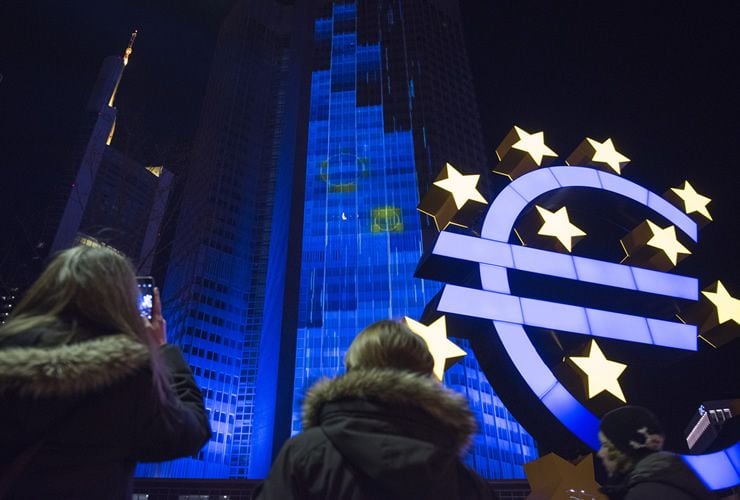Danske Bank: Euro to Dollar Exchange Rate Forecast to Trace a ‘Bowl Profile’

Danske Bank have written to clients telling them to expect EUR/USD to weaken still further but not to expect a runaway Dollar to cause any significant damage.
The Euro starts December on the front-foot against the Dollar with the pair lifting back above the 1.06 area.
The rise comes following another day of rampant advances in the broader US Dollar complex.
The Dollar finished November with a flurry of gains as US treasury yields spiked again thanks to some strong domestic economic data.
The Chicago PMI index also jumped from 50.6 to 57.6 but the trend for the Dollar was set early on by ADP, who reported an increase of 216K jobs in the month of November, up from 147K in October.
"There's no question that dollar bulls remain in control and insist on driving the greenback higher into NFPs. There is still the risk of profit taking but the path of least resistance for the greenback remains higher," says Kathy Lien, Director of BK Asset Management in New York.
Expect the trend to continue say Danske Bank in their latest strategy brief to corporate clients.
Danske Bank say further Dollar strength is to be expected to be derived on bets that the currency in coming years benefit from an increase in inflows from overseas as Donald Trump puts pressure on corporations to repatriate earnings, via a second ‘Homeland Investment Act’ (HIA), offering tax breaks on repatriated earnings.
The previous HIA in 2005, led to a substantial rise in the Dollar, and this one could generate even more upside because of the effects of globalisation and the internet which have made it easier for companies to transfer capital into offshore tax avoidance schemes.
Obviously this is event is quite far in the future but currency markets have an eye on the future and speculators will be emboldened by the prospect of future supportive inflows.
According to Danske’s Chief Analyst, Allan Von Mehran:
“The Homeland Investment Act introduced by President George W. Bush in 2005 prompted major capital flows into the US and a pronounced strengthening of the USD.
“A similar effect could be possible in 2017, especially as US foreign direct investment has grown since 2005.”
An estimated 2 trillion in unrepatriated earnings sit offshore, and whilst the strong Dollar may be a disincentive to repatriation, the one-off tax moratorium Trump is suggesting, would more than make up for the currency loss.
Also, only one-quarter of the money is estimated to be in foreign exchange thus reducing the impact of the strong Dollar.
Euro to be Weighed Down by Politics
Political risk is expected to weigh on the Euro side of the pair in the short-term as well, especially with the Italian referendum, the Austrian Presidency, the French Presidency and the Dutch General Election, all in the near term.
At least two out of the four elections cited are likely to lead to wins for far-right anti-EU parties (in Austria and Netherlands).
There is also the possibility of Italy’s referendum leading to a snap general election, which could see a victory for the anti-EU Five Star party.
In France, the election of Francois Fillon in the primaries makes it less likely that far-right candidate Marine Le Pen will be voted into power, but even there a shock – as happened in the UK and US is possible too.
Nevertheless France poses the biggerst downside risk to the Euro in the short-term argues Danske’s Von Mehran:
“In France, the focus is on the presidential elections in April/May with the party leader of the Front National, Marine Le Pen, dominating the headlines.
“She has stated that she will call a referendum on France’s continuing membership of the EU if she wins the election.
“We believe the French presidential election poses the biggest downside risk in terms of rising risk premiums on euro assets and, by extension, euro weakening.
EUR/USD Forecast: Bowl Profile
Danske’s analysis leads them to forecast the EUR/USD pair falling to 1.05 in 1 month, 1.04 in three months.
In the longer term, they see the Euro rising more robustly as the positive European Current Account surplus sees net Euro inflows whilst the US Net
Current Account deficit sees Dollar outflows.
“Longer term, we maintain our view that fundamentals and the substantial undervaluation of the EUR will limit the potential for a sustained Dollar appreciation. Accordingly, we expect EUR/USD to rise to 1.08 in 6 months and to 1.12 in 12 months,” conclude Danske.




